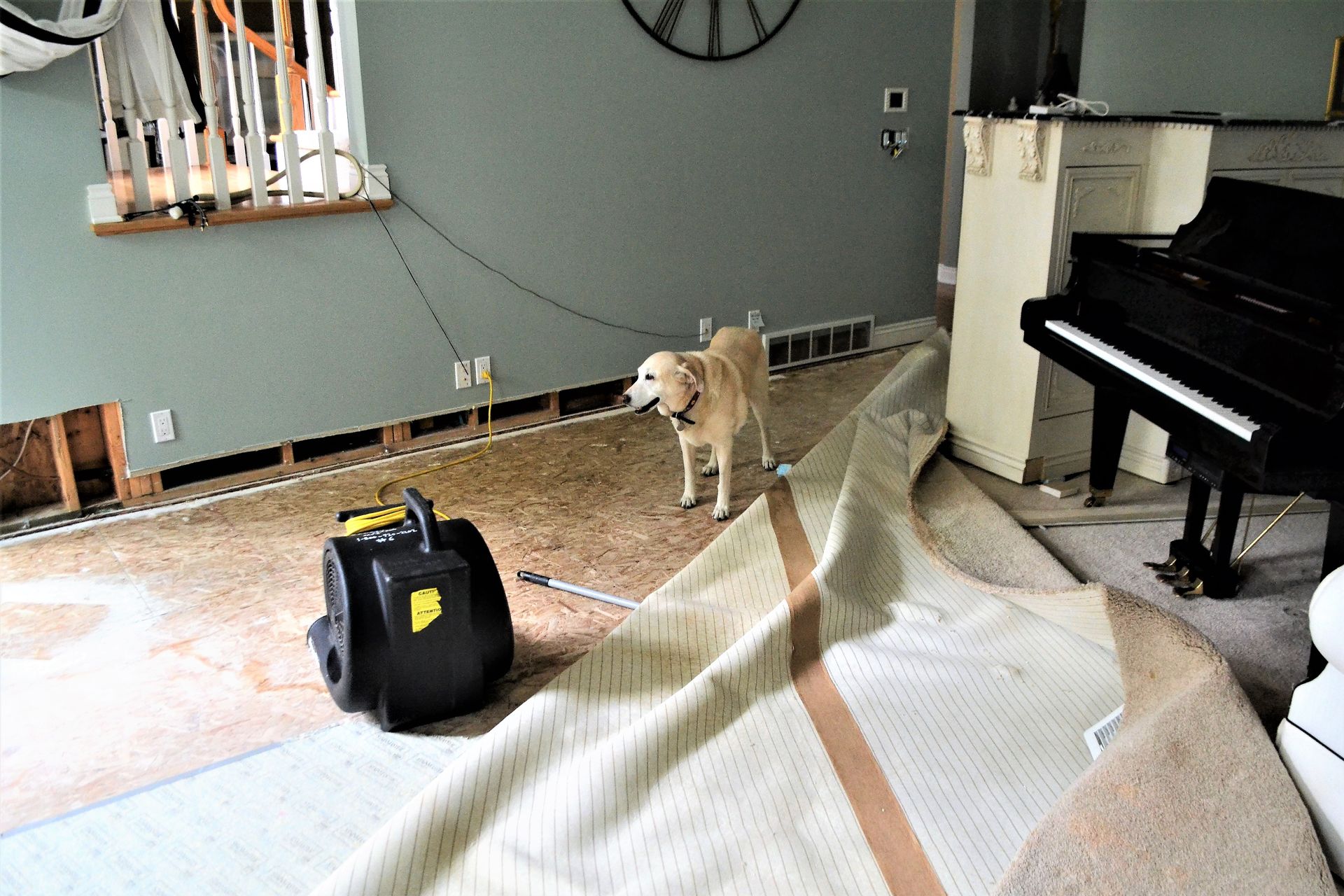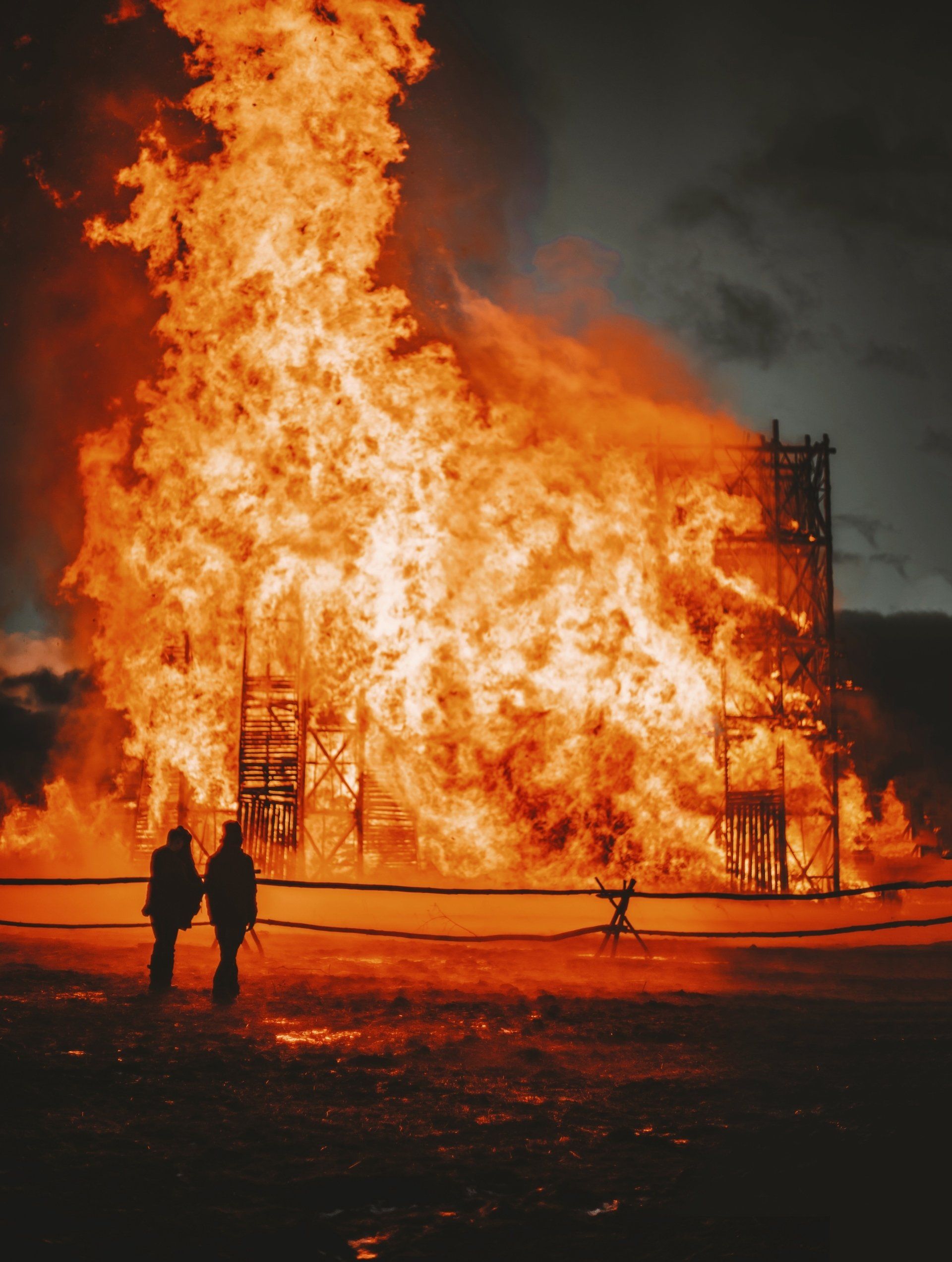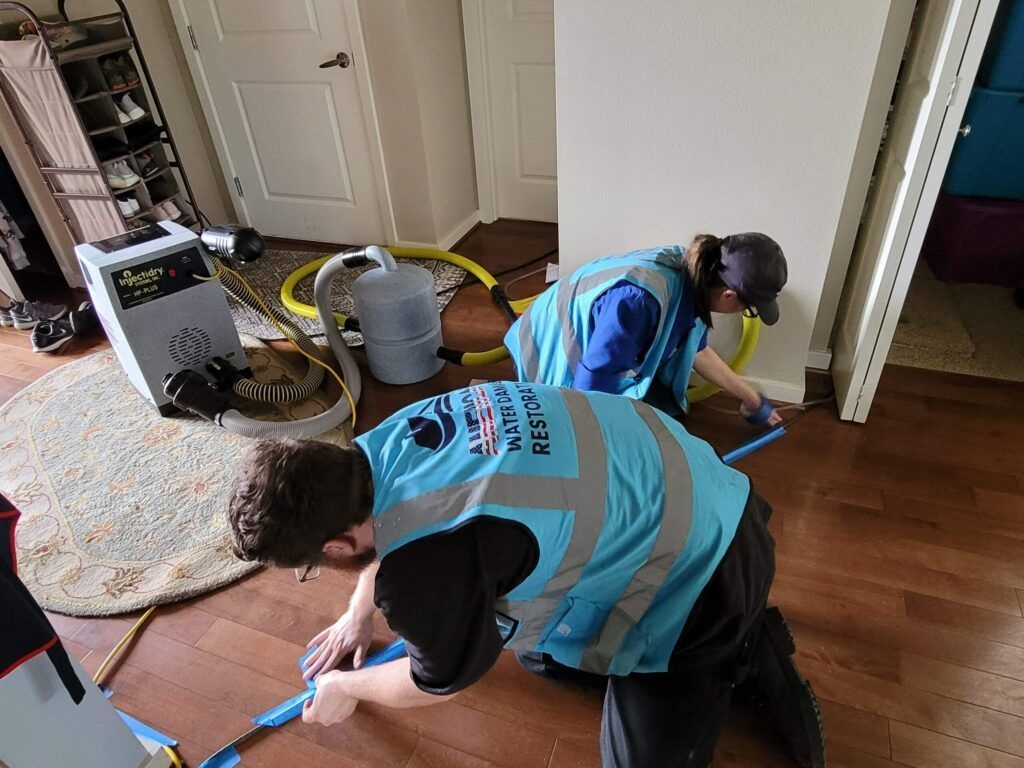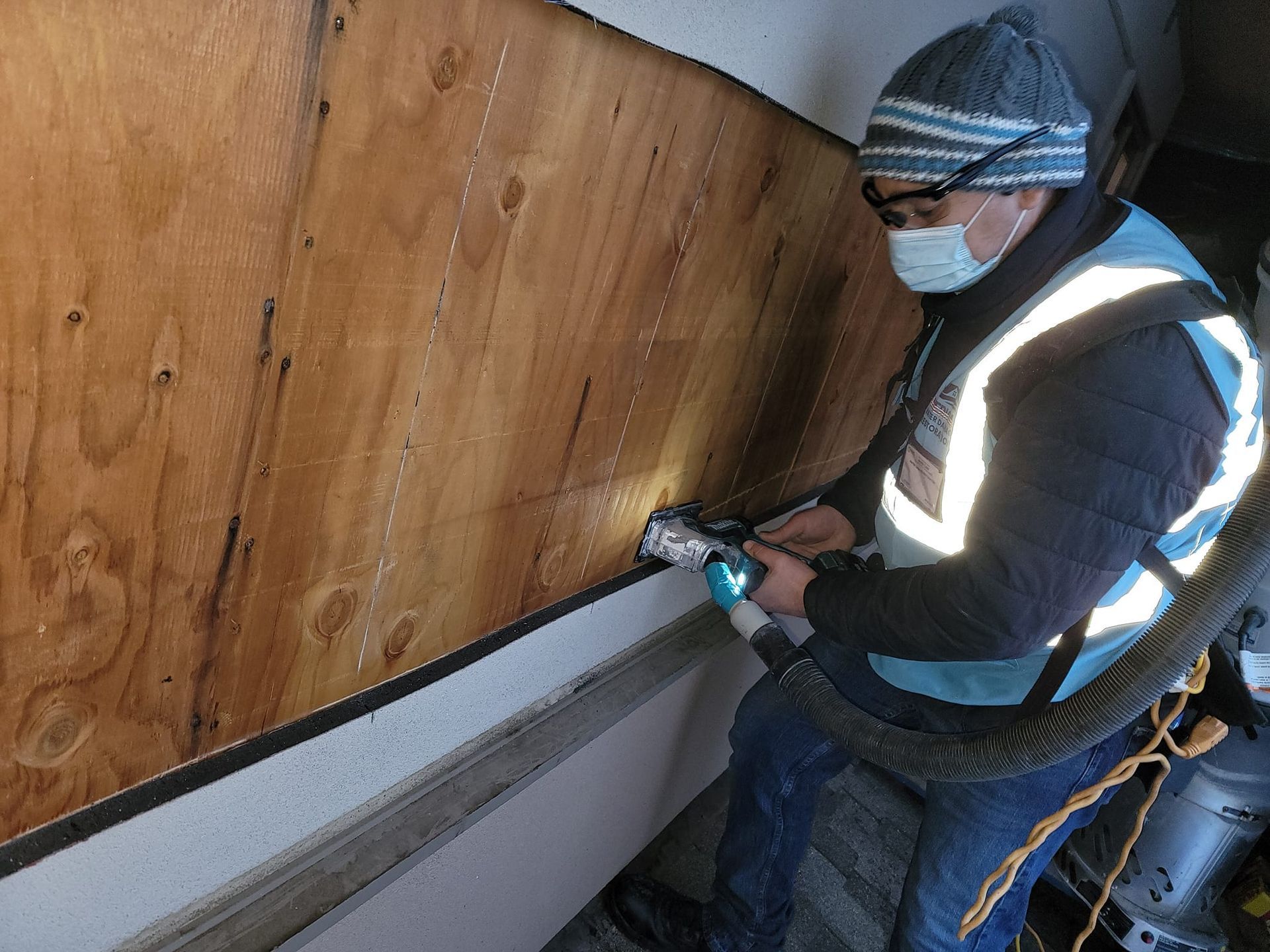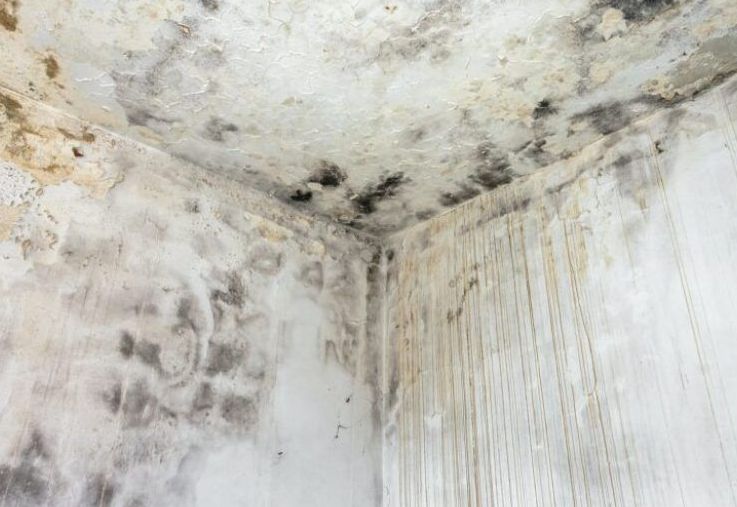- 24/7 EMERGENCY SERVICE
- ON OUR WAY IN 60 MINUTES OR LESS
- WE WORK WITH YOUR INSURANCE
How to Prevent Fire Damage in Your Commercial Building
How to Prevent Fire Damage in Your Commercial Building
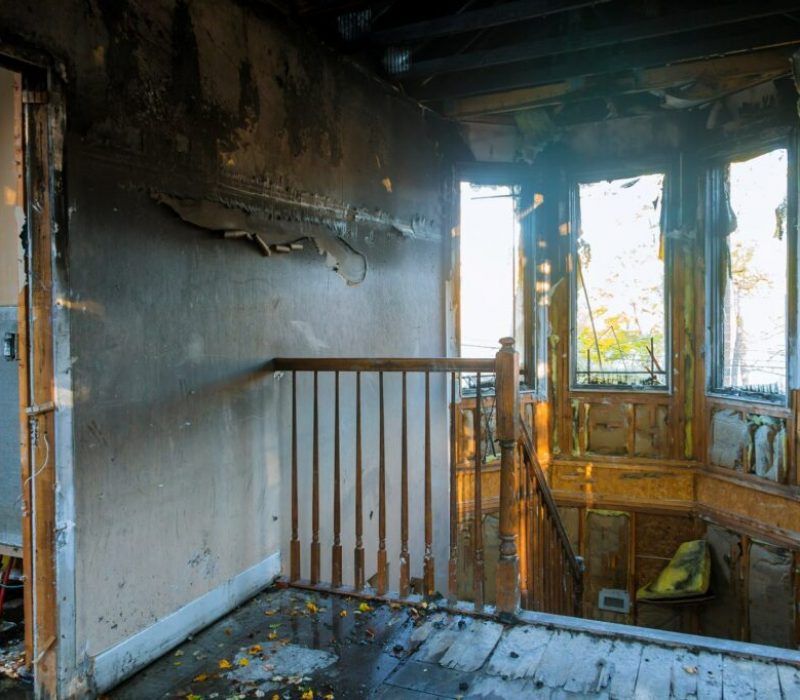
Commercial fire damage is an unfortunate yet common occurrence that devastates businesses. Every year, business fires lead to significant commercial property fire damage, resulting in financial losses and operations disruptions. The
National Fire Protection Association reports that U.S. fire departments respond to an average of 3,340 fires in office properties per year, causing an annual average of $112 million in property damage. This article will explore effective strategies for preventing fire damage, delve into the importance of commercial fire damage restoration post-incident, and discuss how to handle commercial smoke damage to get your damaged business back to its feet post-haste.
Understanding the Risks: Why Commercial Fires Happen
In commercial settings, fires are frequently caused by factors such as electrical malfunctions, improper use or maintenance of heating equipment, and careless smoking practices. For example, outdated wiring or overloaded circuits can lead to electrical fires, while improperly maintained furnaces or space heaters can spark fires in heating systems. Unattended or improperly disposed of cigarette butts can ignite materials, leading to often underestimated commercial smoke damage.
The nature of a business can significantly influence fire risks. Restaurants or catering establishments, with their extensive use of cooking equipment, have different fire hazards compared to office buildings, where electrical equipment and paper products pose the primary fire risks. Thus, it's crucial for each business type to conduct a comprehensive risk assessment to identify potential fire hazards specific to their operations.
Understanding these risks and potential sources of fires is paramount in creating a robust fire prevention strategy. A thorough risk assessment not only identifies the potential hazards but also helps in formulating a specific action plan for each identified risk. This proactive approach is vital in preventing commercial fire damage, ensuring the safety of your business, and maintaining its continuity.
Essential Strategies for Preventing Fire Damage in Commercial Properties
Fire safety in commercial properties is not a matter to be taken lightly. Each year, thousands of businesses bear the brunt of preventable fires, enduring significant financial loss and operational disruption. The aftermath of commercial fire damage often extends beyond the initial incident, with
commercial smoke damage and associated repairs causing further setbacks to the already damaged business. Consequently, the key to minimizing commercial property fire damage is to take a proactive approach. Implementing effective fire damage prevention strategies in advance provides a necessary safeguard against potential business fires. Let's look at some of these essential strategies to assist you in maintaining a safer and more resilient commercial environment.
1. Conduct Regular Fire Risk Assessments
Conducting regular fire risk assessments is fundamental in identifying potential fire hazards. An effective assessment involves a systematic evaluation of your commercial property to recognize fire sources such as faulty wiring or flammable materials. It's advisable to undertake these assessments annually or whenever significant changes occur in your premises. They should be performed by a trained professional or a competent staff member who understands your business operations to ensure that all potential hazards are correctly identified and mitigated.
2. Install and Maintain Fire Detection Systems
A robust fire detection system is critical in ensuring early alerts to potential fire incidents. These systems range from conventional smoke detectors to advanced heat and flame detectors. When strategically installed, they provide critical minutes for evacuation and fire mitigation. Regular inspections and maintenance, including battery replacements and functionality tests, are key to ensuring these systems' reliability. It's advisable to engage professionals for installation and routine maintenance to ensure the system's optimal performance and adherence to safety standards.
3. Ensure Electrical Safety
Electrical systems pose a significant fire threat in commercial spaces, with hazards ranging from faulty wiring to overloading circuits and the improper use of extension cords. Regular inspection and maintenance by a licensed electrician can help identify and rectify these risks. It's crucial to ensure that all electrical equipment is used safely and as per manufacturer guidelines. Avoid "daisy chaining" extension cords or overloading outlets, and always switch off and unplug equipment not in use. These simple practices can significantly minimize the risk of electrical fires.
4. Implement Fire Suppression Solutions
Fire suppression solutions, such as sprinkler systems and fire extinguishers, are pivotal in controlling and extinguishing fires. Sprinkler systems, when activated by heat, douse the flames, while fire extinguishers can be used for small, contained fires. Accessibility to these devices is crucial in emergencies. Thus, they should be positioned conspicuously, and their use should be known to all staff. Regular maintenance checks, performed by professionals, ensure these systems function effectively when needed, maintaining your business's safety and resilience against commercial fire damage.
5. Safe Storage of Flammable Materials
Flammable materials, common in commercial settings, include cleaning chemicals, aerosols, paints, and fuels. Proper handling and storage are essential to prevent fire incidents. These substances should be stored in designated, well-ventilated areas away from heat sources. Containers must be tightly sealed, and the surrounding area must be free of combustible materials. Additionally, it's vital to label these containers correctly and clearly, indicating their flammable nature. Proper containment and labeling not only minimize the risk of accidental ignition but also help in the quick identification of hazards during emergencies, contributing significantly to commercial fire damage prevention.
6. Conduct Regular Fire Safety Training
Training employees in fire safety protocol is essential in minimizing commercial fire damage. Regular sessions ensure that staff can respond effectively during emergencies, preventing the escalation of commercial property fire damage. Training should cover the use of fire safety equipment, evacuation procedures, and first-responder actions. It's recommended to conduct these training programs semi-annually or as new employees join the team. Additionally, drills simulating business fires can be beneficial, providing hands-on experience in dealing with such incidents. This proactive approach can significantly reduce damage in the event of a fire.
7. Maintain Clear Escape Routes and Evacuation Plans
Maintaining clear escape routes and comprehensive evacuation plans is a critical component of fire safety. Escape routes should be unblocked and clearly marked, leading directly to safety. Develop evacuation plans that are easily understandable and communicate them to all employees. Display these plans prominently throughout the premises. Conduct regular fire drills to familiarize staff with evacuation procedures, enhancing their preparedness and confidence in case of an actual fire. These measures significantly contribute to minimizing commercial fire damage and safeguarding lives during business fires.
8. Utilize Fire-Resistant Materials and Fire Doors
Utilizing fire-resistant materials in construction and installing fire doors are key strategies in managing commercial fire damage. Fire-resistant materials, such as fire-retardant-treated wood and fire-resistive glass, slow down fire spread, providing critical time for evacuation. Fire doors compartmentalize the fire, confining it to one area and preventing its spread across the building. Regular inspections by certified professionals are crucial to ensure these elements are up to code. They check for any damages, proper installation, and the integrity of seals and closers, ensuring optimal functionality of these fire prevention mechanisms.
9. Enforce Strict Smoking Policies
Smoking poses a significant risk of commercial fire damage, especially if not properly managed. Enforcing strict smoking policies, including designated smoking areas located safely away from flammable materials, can significantly mitigate these risks. Moreover, the provision of fire-resistant containers for the safe disposal of smoking materials is vital to prevent accidental ignition. Adherence to these policies ensures a safer environment, reducing the likelihood of commercial smoke damage and business fires. Proper disposal of smoking materials is not just a policy but a proactive measure to protect your business from fire damage.
10. Stay Compliant with Fire Safety Regulations
Staying compliant with local fire safety regulations is crucial in managing commercial fire damage. Regular inspections by authorized entities can identify potential hazards, ensuring that your commercial property adheres to all safety standards. These inspections also provide insights into evolving safety measures, enhancing your ability to prevent business fires effectively. Resources such as the National Fire Protection Association (NFPA) and your local fire department's websites are valuable for staying updated on fire safety compliance, offering guides, updates, and important regulations. A commitment to compliance not only ensures safety but also helps in minimizing the impact of commercial smoke damage.
How to Respond to a Fire Emergency
When a fire emergency occurs, the initial response is crucial. First and foremost, alert all individuals in the building and activate the fire alarm system. Immediately after, call 911 or your local fire department, providing them with as much detail about the situation as possible.
Remember, in a fire emergency, evacuation should be your top priority. Remain calm and guide everyone towards the nearest fire exit, avoiding areas where smoke or fire is heavy. Remember, smoke inhalation can be just as deadly as the flames, so if possible, cover your nose and mouth with a wet cloth to filter out harmful smoke particles.
Once everyone is out of the building, move to a safe distance and do not attempt to re-enter until it's safe to do so, as declared by the fire department. Cooperate fully with the firefighters and emergency services and provide them with any necessary information about the building layout, potentially hazardous materials, or anyone who may still be inside.
Lastly, contact your commercial fire damage restoration company as soon as possible. They can provide immediate assistance, assess the extent of the commercial fire and smoke damage, and start the process of getting your damaged business on the path to recovery. The key is to act swiftly and responsibly, minimizing the impact of the disaster on your commercial property.
Post-Fire Recovery Strategies
Navigating the aftermath of a fire can be overwhelming, but it's crucial to take a methodical approach. One of the first steps is to contact your insurance company to report the incident and understand the extent of your coverage. Having comprehensive insurance that covers both property and contents can significantly alleviate financial stress after a commercial fire. This coverage should ideally include costs for fire damage restoration, smoke cleanup, and any associated losses.
Thoroughness is key when it comes to choosing a commercial
fire damage restoration company. Look for a company with a solid reputation, proven expertise, and responsive customer service. Ensure they are equipped to handle the full range of issues, including fire, smoke, and water damage. They should have a clear action plan for restoration and be able to coordinate with your insurance company to streamline the recovery process.
Finally, remember that recovery is a process. It takes time to repair the damage and restore your commercial property to its pre-fire state. Stay patient, lean on the support of your chosen restoration company, and maintain focus on the ultimate goal of getting your business back up and running. The resilience and determination you show in this challenging time will be a testament to your business's strength.
Safeguard and Restore: A Comprehensive Approach to Fire Safety
At
American Water & Damage Restoration, we are dedicated to helping businesses recover from the devastating effects of commercial fire damage. Our comprehensive commercial fire damage restoration services address all facets of fire, smoke, and
water damage, giving you peace of mind and saving you valuable time and resources. We understand the urgency of getting your business back on track, and we're here for you 24/7. Reach out to us for an immediate response and to start the journey towards restoring your damaged business. Remember, preventing fire damage starts with you, but restoring your property is our responsibility. Contact us today.
CONTACT US 24/7 FOR ANY TYPE OF RESTORATION SERVICES
Our Contact Information
123 2nd Ave S, Edmonds, WA 98020, United States of America
OPEN 24/7
CONTACT US 24/7
For an immediate response call us 24/7 at (206) 771-7040 or complete the form below.
Contact Us
We will get back to you as soon as possible.
Please try again later.
24/7 Emergency Services!
CALL (206) 771-7040
We’re Fast! We’re Efficient!… And we will get the job done right, the first time!
Contractor Number: AMERIWD794PJ
OUR SERVICES
CONTACT INFO
123 2nd Ave S, Edmonds, WA 98020, United States of America
All Rights Reserved | American Water and Damage Restoration LLC


